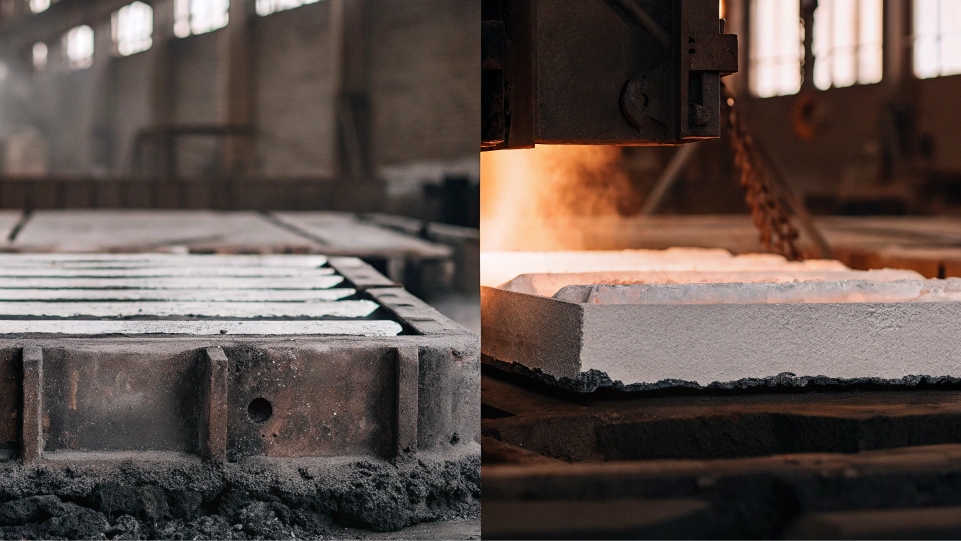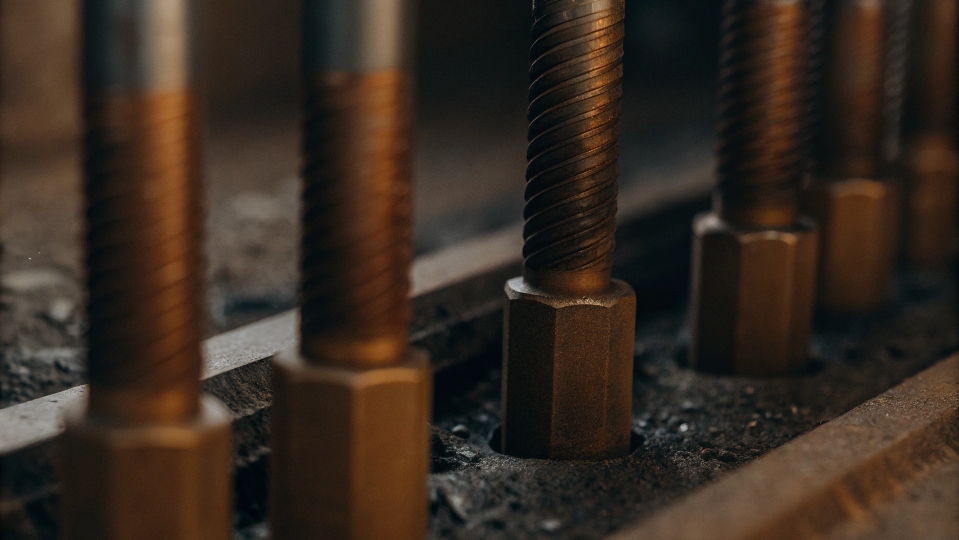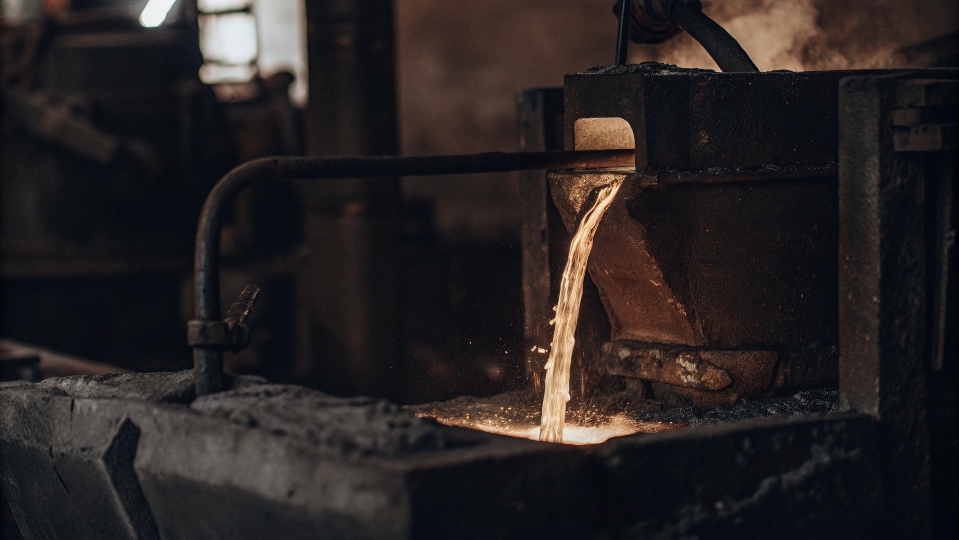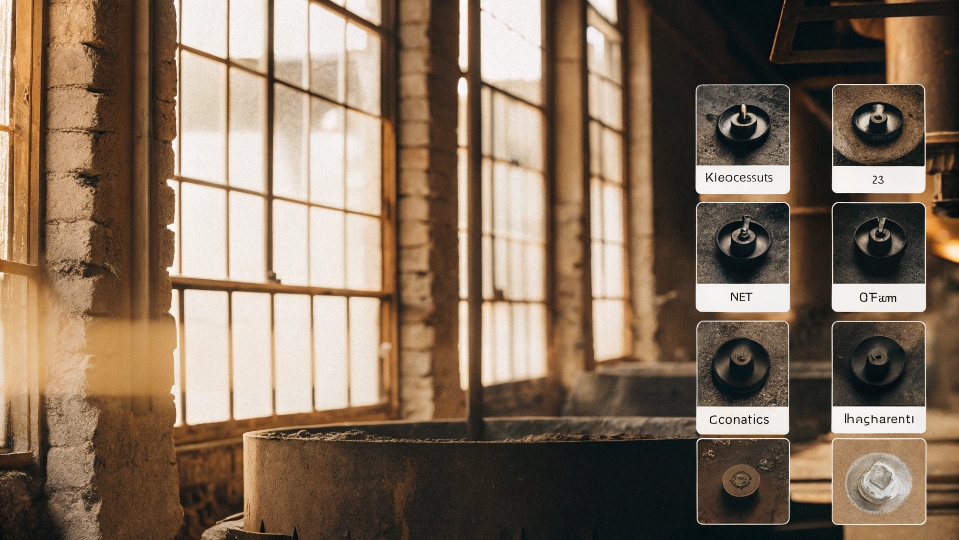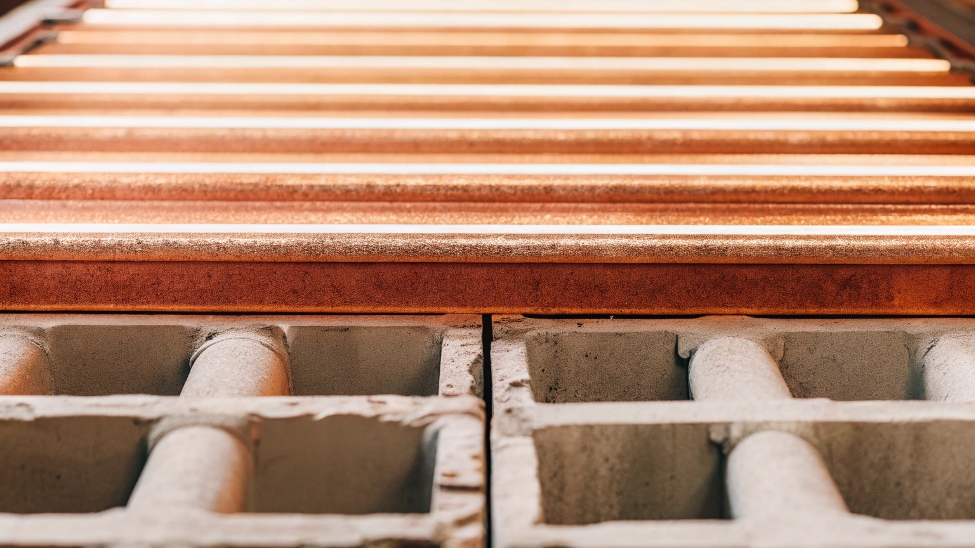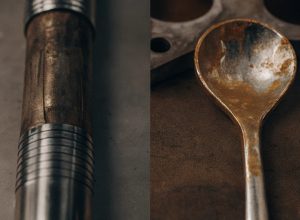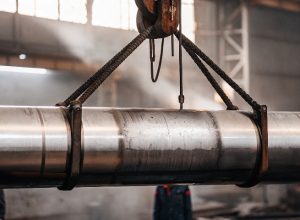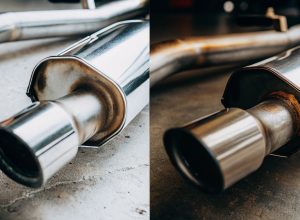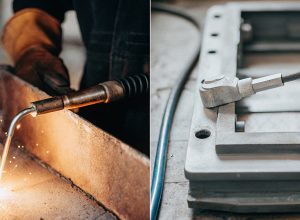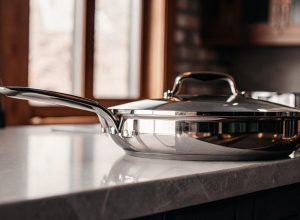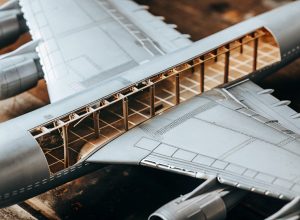Борьба за улучшение чугун1свойства? Добавление неправильного элемента может привести к поломке. Легирование титаном создает более прочный, износостойкий материал, идеально подходящий для высокопроизводительные детали2.
Титан действует как мощный переработчик зерна3 и стабилизатор карбида. Образует твердые карбиды титана (TiC)4, которые значительно повышают твердость чугуна, износостойкость5и общей прочности, что делает его идеальным для таких применений, как компоненты двигателей и тормозных систем.
Преимущества очевидны, но как это работает на металлургическом уровне? Взаимодействие между титаном и железом является ключом к раскрытию этих улучшенных свойств. Давайте разберемся, что именно происходит, когда вы добавляете титан в смесь, и как он сопоставляется с другими распространенными легирующими элементами. Эти знания помогут вам принимать более обоснованные решения для ваших проектов.
Каково влияние титана на чугун?
Нужны более долговечные чугунные детали? Стандартные сорта могут быстро изнашиваться, что приводит к дорогостоящим поломкам. Добавление титана кардинально меняет структуру чугуна, делая его гораздо более прочным и износостойким.
Основное действие титана в чугуне заключается в образовании очень стабильных и твердых карбидов титана. Эти карбиды служат местами зарождения графита, улучшая структуру зерна и повышая механические свойства, такие как твердость и износостойкость, особенно в условиях повышенного трения.
Будучи инженером по исследованиям и разработкам, я часто вижу, как менеджеры по продукции, такие как Лиза, удивляются тому, как небольшая добавка титана, обычно всего 0,1% - 0,3%, может преобразить чугун. Волшебство заключается в его сильном химическом сродстве с углеродом.
Стабилизация карбидов для повышения прочности
В стандартном чугуне углерод содержится в виде графитовых хлопьев или конкреций, которые могут создавать слабые места. При введении титана он охотно соединяется с углеродом, образуя карбиды титана (TiC). Эти частицы невероятно твердые и стабильные, даже при высоких температурах. Они распределяются по всей железной матрице, действуя как армирующий каркас. Это предотвращает образование более слабых карбидов железа и значительно повышает общую твердость и износостойкость конечного продукта.
Уточнение микроструктуры
Эти крошечные частицы TiC также служат еще одной важной цели: они выступают в качестве семян, или мест зарождения, для образования графита во время затвердевания. Это приводит к формированию более тонкой, однородной структуры графита и уменьшению размера зерен в окружающей железной матрице. Более мелкая зернистая структура напрямую приводит к улучшению механических свойств, включая прочность на разрыв и усталостную прочность. Именно поэтому чугун, легированный титаном, можно встретить в тормозных роторах и блоках двигателей автомобилей.
Что произойдет, если смешать титан и железо?
Интересно, что на самом деле происходит, когда титан растворяется в расплавленном железе? Незнание этого процесса может привести к несовместимым партиям. Понимание химической реакции гарантирует получение предсказуемых и высокопроизводительных результатов.
Когда вы смешиваете титан и железо, титан растворяется в расплавленном металле. По мере остывания титан соединяется с углеродом, содержащимся в железе, и образует твердые, стабильные частицы карбида титана (TiC). Эти частицы рассеиваются внутри железной матрицы, укрепляя ее.
Процесс легирования начинается в печи. Это нечто большее, чем простое смешивание. Когда мы добавляем ферротитан (сплав железа и титана) в ванну с расплавленным чугуном, происходят две основные вещи. Во-первых, титан действует как раскислитель. Он сильно притягивает кислород и образует оксиды титана, которые всплывают в слой шлака и удаляются. Это очищает расплав и предотвращает дефекты, связанные с кислородом.
Во-вторых, что более важно для конечных свойств, это образование карбида, о котором я уже говорил. Это не происходит мгновенно. Оно происходит по мере остывания и затвердевания железа. Атомы титана находят атомы углерода и связывают их в стабильную структуру TiC. Этот процесс очень важен для получения мелкозернистого, износостойкого материала. Вот простое сравнение из моего опыта работы на заводе:
| Недвижимость | Стандартный серый чугун | Чугун, легированный титаном (0,2% Ti) |
|---|---|---|
| Твердость (Бринелль) | 170-229 HB | 200-260 HB |
| Износостойкость | Умеренный | Высокий |
| Структура графита | Крупные хлопья (тип A) | Более мелкие хлопья (тип D/E) |
| Типовое применение | Гильзы общего назначения | Тормозные барабаны, вкладыши двигателя |
Это простое изменение значительно повышает производительность для клиентов, которым нужны долговечные компоненты.
Как влияют легирующие элементы на чугун?
Запутались в многочисленных легирующих элементах для чугуна? Неправильный выбор может испортить бюджет проекта или его производительность. Понимание роли каждого элемента позволит вам подобрать материал в соответствии с вашими потребностями.
Легирующие элементы в чугуне используются для изменения его микроструктуры и улучшения специфических свойств. Такие элементы, как хром и титан, повышают твердость за счет образования карбидов. Другие, такие как никель и медь, повышают прочность, а кремний способствует образованию графита, улучшая литейные свойства.
Титан - лишь один из инструментов в нашем металлургическом арсенале. Мы используем различные элементы для тонкой настройки чугуна. Я часто объясняю это менеджерам по продукции, группируя элементы по их основной функции.
Твердосплавные формовщики для придания твердости
Как и титан, такие элементы, как хром (Cr), молибден (Mo) и ванадий (V), являются сильными карбидообразователями. Они образуют очень твердые карбиды металлов, которые значительно повышают износостойкость. Хром очень часто используется в износостойких материалах.
Графитовые промоторы для повышения литейной прочности
С другой стороны, некоторые элементы способствуют тому, что углерод образует графит вместо карбидов. Кремний (Si) - самый важный из них, он присутствует во всех чугунах. Он делает чугун более текучим и легким для литья. Медь (Cu) также может способствовать образованию графита, немного укрепляя при этом железную матрицу.
Усилители матриц для повышения прочности
Такие элементы, как никель (Ni) и марганец (Mn), в первую очередь растворяются в самой железной матрице, укрепляя ее. Никель отлично подходит для повышения вязкости и прочности, особенно при низких температурах, а также повышает коррозионную стойкость. Марганец повышает твердость, но может сделать железо хрупким, если использовать его в избытке. Выбор правильной комбинации - ключевой момент.
Как влияет олово на чугун?
Вы когда-нибудь слышали об использовании олова в чугуне? Это мощная, но сложная добавка. Небольшая ошибка может сделать материал хрупким, что приведет к неожиданным поломкам деталей под нагрузкой.
Олово является сильнодействующим перлитовый промоутер6 в чугуне. Даже в очень малых количествах (около 0,1%) он препятствует образованию свободного феррита, в результате чего образуется полностью перлитная матрица. Это значительно повышает твердость и стабильность, но может также снизить пластичность и ударную вязкость.
Олово - интересный случай. Мы используем его очень стратегически. В отличие от титана, который образует отдельные частицы карбида, олово воздействует непосредственно на матрицу железа.
Как олово создает перлитную структуру
Матрица чугуна может представлять собой либо мягкий феррит, либо более твердую слоистую структуру, называемую перлитом. Олово является сильным промотором перлита. Оно стабилизирует перлитную фазу во время охлаждения, предотвращая образование феррита даже в толстых участках отливки. Полностью перлитная структура обладает более равномерной твердостью и лучшей износостойкостью, чем смешанная феррито-перлитная структура. Это ее основное преимущество, и для достижения этого эффекта требуется лишь небольшое количество, обычно менее 0,1%.
Компромисс между твердостью и пластичностью
Однако за повышенную твердость приходится платить. Перлитная структура менее пластична и обладает меньшей ударной вязкостью, чем ферритная. Это критический компромисс, который должен учитывать менеджер по продукции, подобный Лизе. Если ее применение связано с высокой ударной или шоковой нагрузкой, добавление олова может быть рискованным. Это точный инструмент для повышения твердости, когда высокая пластичность не является главной задачей. Это сильно отличается от титана, который в основном повышает твердость за счет отдельных частиц TiC, одновременно улучшая общее зерно.
Заключение
Одним словом, легирующие элементы, такие как титан, преобразуют чугун. Они придают ему особые свойства, такие как твердость и износостойкость, позволяя адаптировать материал для любого высокопроизводительного промышленного применения.
-
Понимание свойств чугуна необходимо для выбора подходящего материала для ваших проектов. ↩
-
Получите представление о характеристиках и применении высокопроизводительных инженерных компонентов. ↩
-
Узнайте о роли зерноочистителей в повышении механических свойств металлов. ↩
-
Узнайте о преимуществах карбидов титана в повышении твердости и долговечности материалов. ↩
-
Поиск эффективных методов повышения износостойкости различных материалов для улучшения их эксплуатационных характеристик. ↩
-
Узнайте о перлитных промоторах и их влиянии на твердость и стабильность материалов. ↩

